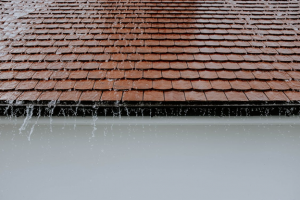The roof over your head is more than a saying; it’s a crucial part of your home that protects you and your family from the elements. But what happens when that protection is compromised? Whether it’s due to age, weather-related damage, or neglect, the choice between repairing or replacing your roof is a significant one. This decision can affect your home’s value, your safety, and your wallet. Here are six essential tips to walk you through this vital home maintenance judgment call.
Assess the Damage Thoroughly
Before you jump to any conclusions, it’s important to understand the extent of the damage. This requires a detailed inspection, usually best left to a professional. Look for shingles that are cracked, curling, or missing. Check for leaks inside your attic and water stains on the ceiling. Any sagging areas can indicate serious structural issues and they are a sign to have your roof replaced as soon as possible. If the damage is to one isolated area, you may only need a repair; widespread issues might require a full replacement.
Consider the Age of Your Roof
The average lifespan of a roof significantly differs based on the materials chosen for its construction. Asphalt shingles, a common choice for many homeowners due to their cost-effectiveness and ease of installation, typically last about 20 years. On the other hand, more durable materials like metal or slate can significantly surpass this, with lifespans of 50 years or even longer.
When a roof approaches or exceeds its expected lifespan, homeowners are often faced with the decision of whether to repair or replace it. In many cases, replacement might be the most cost-effective solution in the long run, especially if the roof is showing signs of significant wear or damage. Investing in a new roof not only ensures the structural integrity of your home but can also lead to better energy efficiency, thanks to modern roofing materials and technologies that offer improved insulation and reflectivity. Additionally, a new roof can greatly enhance your home’s curb appeal, which is particularly advantageous if you’re contemplating selling your property in the near future. Upgrading your roof can thus be a wise investment, contributing both to the immediate protection and long-term value of your home.
Understand the Repair Limitations
Determining whether a repair can effectively address your roofing problems isn’t always straightforward. Certain complications, such as extensive water damage throughout the structure or foundational issues, may defy a simple fix. A mere patch-up might not suffice in remedying these deeper, more pervasive problems. Moreover, the situation becomes more complex if the existing roof has accumulated multiple layers of shingles over time. In such cases, local building regulations could pose additional constraints, potentially prohibiting the application of yet another layer due to safety and structural integrity concerns. It’s paramount to have a comprehensive grasp of these potential limitations and intricacies before committing to a repair strategy. This ensures you’re making an informed decision, one that accounts for the possibility that a short-term fix might not equate to a viable, long-term resolution for your roofing woes.
Weigh the Costs
Cost is a significant factor in deciding between repair and replacement. A repair is typically less expensive upfront, but if it’s only a short-term fix, it can end up costing you more in repeated repairs. On the other hand, replacing your roof can be a significant investment, but it often comes with warranties that can provide peace of mind and possible homeowner’s insurance savings. Get several quotes from reputable contractors to understand the financial implications fully.
Think Long-Term
Your decision should not only consider the immediate issue but also look at the long-term. Will a repair buy you a few more years, or is the broader, more permanent fix better in the long run? Think about the timeline and the potential for future problems both financially and functionally. Roof replacement provides an opportunity to install newer, more efficient materials that can save you money on energy bills and potentially forestall future problems.
Consult with a Professional
While it’s valuable to gather as much information on your own, there’s no substitute for professional advice. A qualified roofer can provide guidance that takes into account the unique factors of your home and its environment. They will understand local building codes, material options, and the most efficient solutions for your specific problem. Ultimately, a consultation with a professional is an investment in a decision that can have lasting consequences for your home and your family.

Making the right choice between repairing or replacing your roof requires careful consideration of various factors. By following these six tips, you’ll be better equipped to make an informed decision. Remember, a solid roof is more than an overhead covering—it’s an investment in the future of your home.

Recent Comments